When it comes to woodworking, trim projects, or furniture repair, knowing whether to use Small Nails or Brad Nails can save you time, prevent splitting, and ensure a professional finish. Both Small Nails and Brad Nails are essential fasteners for delicate and lightweight projects, but they serve slightly different purposes. Understanding their differences, advantages, and best-use scenarios can help you work efficiently and get a cleaner final result.
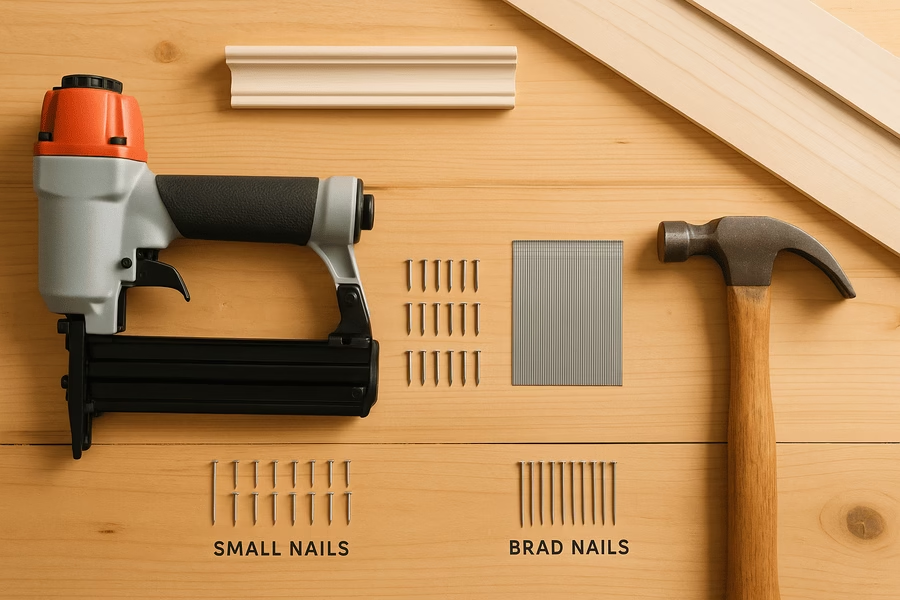
What Are Small Nails?
Small Nails refer to thin, short nails often used for light woodworking, trim, and small crafts. They are manually driven and come in various types, including finishing nails, wire nails, or panel pins. Because Small Nails are lightweight and discreet, they are perfect for attaching small trim pieces, delicate mouldings, or thin boards without causing noticeable surface damage.
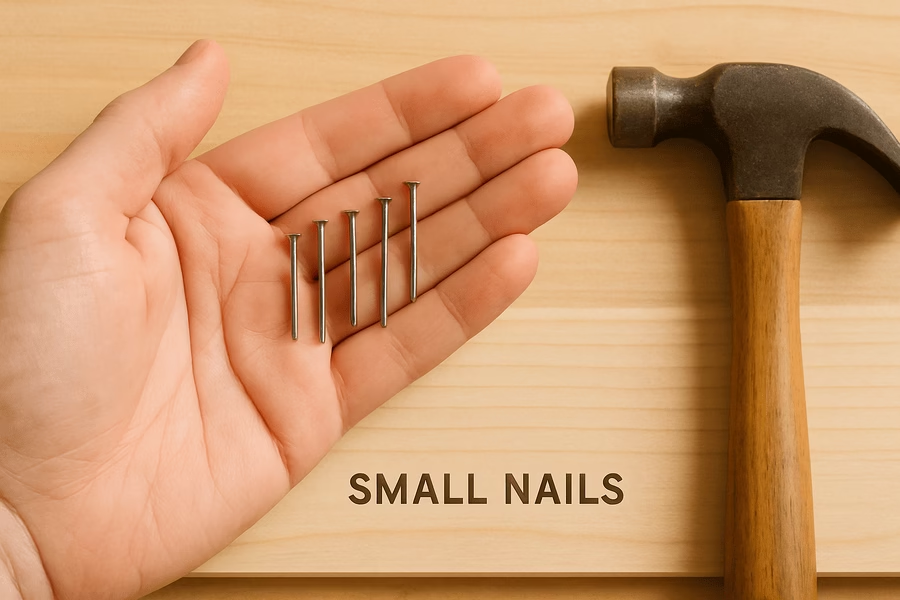
Although Small Nails have been found useful in various manual projects, their versatility and especially easy installation without a nail gun are great advantages, but on the hardwood, they prove to be quite difficult to drive into without bending, so it is required to be pre-drilled sometime to avoid splitting.
What are Brad Nails?
Brad Nails are thin-gauge nails, typically 18-gauge, used with a brad Nailer for quick, clean fastening in woodworking and finishing work. The small diameter of Brad Nails minimizes wood splitting, and the small head sits flush or just below the wood surface, making them nearly invisible once filled or painted over.
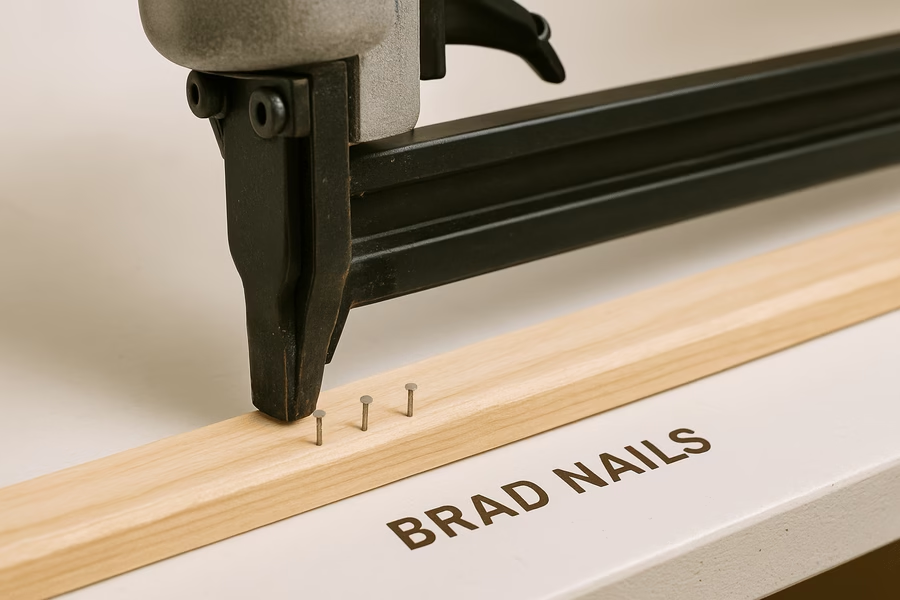
Since Brad Nails are best for holding light trims, baseboards, crown moulding, and small cabinetry parts where a secure hold is desired without having visible fasteners, using Brad Nails with a nail gun saves you time while offering precision. Moreover, it has fewer chances of damaging the delicate trims as compared to nailing Short Nails manually using a hammer.
Small Nails vs. Brad Nails Holding Power
When comparing Small Nails vs. Brad Nails, you’ll notice a slight difference in holding power. Short Nails often offer better grip in thicker materials due to their slight thickness variation and can be driven at angles for stronger joints. However, Brad Nails are better for thin, delicate trims since they cause minimal splitting while offering sufficient holding strength for lightweight applications.
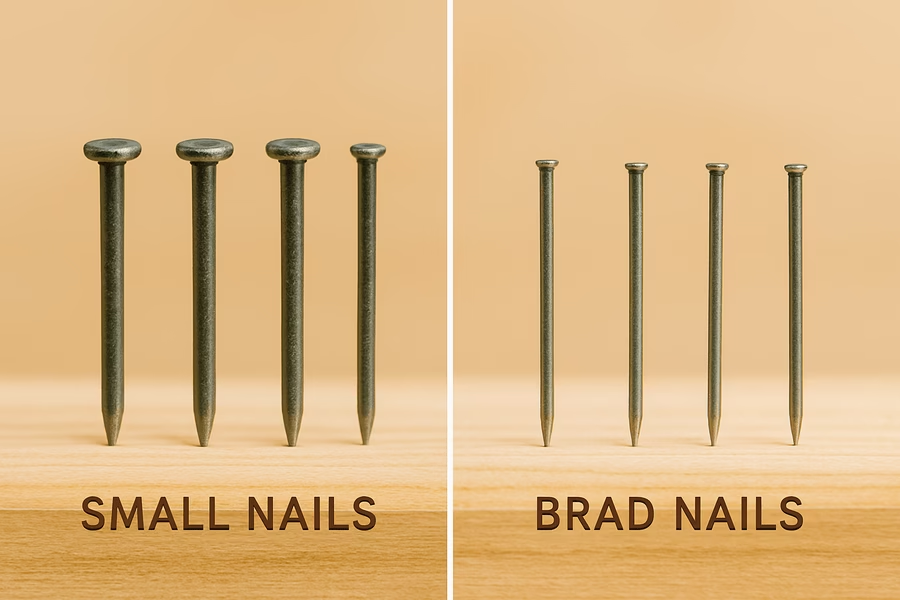
If your project requires a stronger mechanical hold, Small Nails might be a better choice, especially if the nails are driven into studs or thicker boards. For lightweight trims, Brad Nails are sufficient while preserving the surface aesthetics.
Surface Finish: Small Nails vs. Brad Nails
One of the major benefits of Brad Nails is their nearly invisible finish. Since Brad Nails have a very small head, they leave a tiny hole that can easily be concealed with wood filler or paint, making them perfect for visible surfaces.
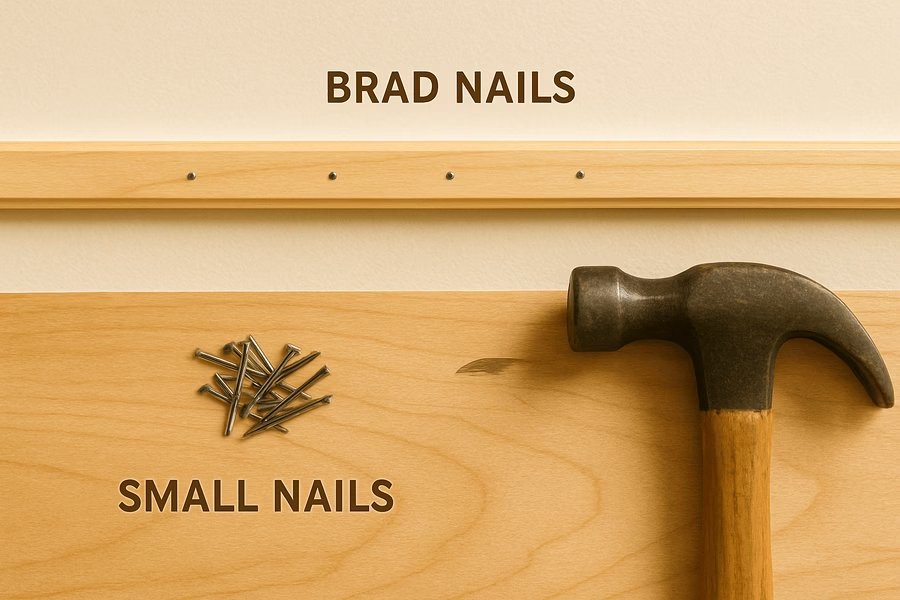
Small Nails, while also small, may leave slightly larger marks on the surface, requiring more noticeable filling or sanding if a seamless look is essential. If your project requires a clean, seamless surface, Brad Nails are the ideal choice.
Ease of Use and Tools Required
Brad Nails do call for a brad Nailer, which is another cost if you don’t happen to have one already. But with a brad Nailer, you save a lot of time, fatigue, and damage to your workpiece when fastening. For projects you will be doing over and over, buying a brad Nailer makes working with Brad Nails that much more convenient.
In contrast, Small Nails require only a hammer, making them accessible for beginners or those without power tools. If your project involves minimal fastening or occasional craft work, Short Nails are practical and cost-effective.
Project Examples: When to Use Small Nails
You should use Small Nails when:
- Attaching small wooden pieces manually.
- Reinforcing joints in thicker wood where angled nailing is needed.
- Craft projects where nail gun use is impractical.
- Repairing furniture where manual control is necessary.
Project Examples: When to Use Brad Nails
You should use Brad Nails when:
- Installing trim, crown moulding, or baseboards.
- Building small cabinetry or furniture with visible surfaces.
- Fastening thin, delicate wood pieces without splitting.
- Seeking a clean, seamless surface with minimal filling.
Splitting Prevention: Small Nails vs. Brad Nails
Both Small Nails and Brad Nails are designed to reduce the risk of wood splitting, but Brad Nails are superior in delicate work due to their thinner gauge. If working with hardwood or thin trim, Brad Nails minimize the risk of cracking, while Short Nails may require pre-drilling.
Cost Consideration
Small Nails are less expensive upfront since you only need nails and a hammer, while Brad Nails require a brad Nailery. However, if you frequently work on woodworking projects, the speed, precision, and surface quality offered by Brad Nails can justify the cost.
Which Should You Use?
The choice between Small Nails vs. Brad Nails ultimately depends on:
Your tools (Manual vs. Nailery).
- The type of project (heavy vs. lightweight trim).
- The need for a clean finish.
- Your budget and project frequency.
If you are working on a quick DIY project or minor repairs, Short Nails will serve well without extra tools. For frequent trim work or when achieving a clean, professional finish is essential, Brad Nails are the better option.
Conclusion
Both Small Nails and Brad Nails are indispensable in woodworking, each with its own strengths. Use Short Nails for manual control, budget-friendly projects, and when a slightly stronger hold is necessary. opt for Brad Nails when working on trim, mouldings, and projects where a seamless finish is desired. Read 10 Easy Nail Art Designs for Beginners: Gorgeous and Simple Nail Inspiration
Understanding when to use Short Nails and when to use Brad Nails ensures cleaner, stronger, and more professional results in your woodworking projects. Whether hobbyist, DIY enthusiast, or professional woodworker, the distinction between Short Nails vs. Brad Nails will make your work smarter, helping you achieve your project aims with confidence read more.






